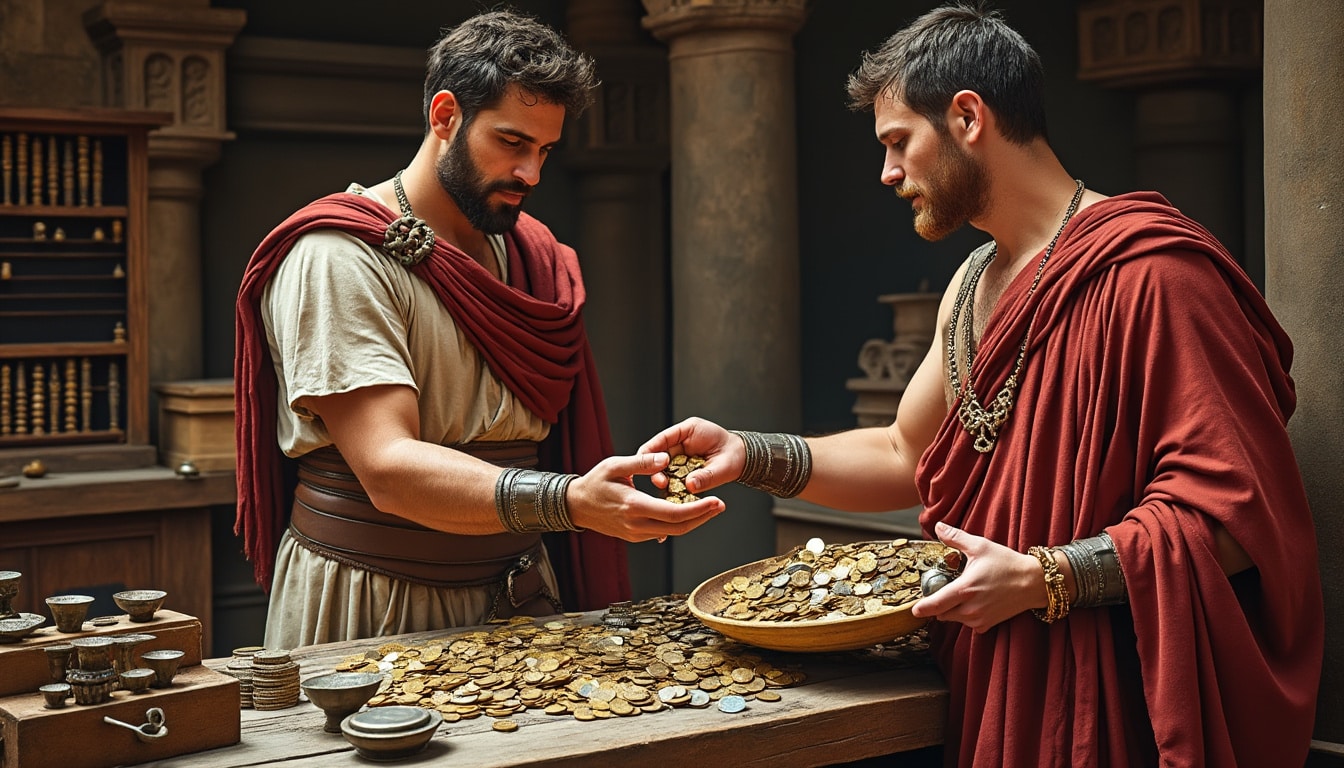Rome, the Eternal City, not only captivates visitors with its ancient ruins and vibrant lifestyle but also presents unique challenges and opportunities when it comes to understanding its currency and payment systems. Whether you’re marveling at the grandeur of the Colosseum or indulging in authentic Italian cuisine, knowing how to manage your finances efficiently can greatly enhance your Roman adventure. From the historical transition from the lira to the euro to mastering electronic payments, this guide unravels the intricacies of handling money in this iconic city.
The Euro: Rome’s Official Currency
Since 2002, the euro has been the official currency in Italy, supplanting the Italian lira, which had been in use since 1861. The introduction of the euro was a significant shift for Italy’s economy, integrating it into the broader eurozone framework. This transition established a sense of economic cohesion with numerous European countries using the euro, making travel and trade more seamless within the continent.
The euro (€), denoted by the sign €, is subdivided into 100 cents and comes in various denominations both in coins and banknotes. Coins range from 1 cent to 2 euros, while banknotes span from 5 euros up to 500 euros, though the latter is not commonly seen. It’s ideal to carry small denominations in coins and notes, as this will facilitate transactions, especially in smaller establishments.

In Rome, it’s straightforward to convert different currencies into euros. Upon arrival, you can conveniently exchange your money at airports, large train stations, banks, and several exchange offices throughout the city. ATMs are also widely available and accept most international debit and credit cards, providing a convenient way to withdraw euros.
| Currency Services | Location | Feature |
|---|---|---|
| Airports | Fiumicino, Ciampino | 24/7 exchange kiosks |
| Train Stations | Termini, Tiburtina | Accessible ATMs and exchange counters |
| Banks | Citywide | Currency exchange and ATM services |
| Exchange Offices | Main tourist areas | Competitive rates |
Before your journey to Rome, it’s wise to check the current exchange rates using online platforms or apps like TransferWise, as these can offer a real-time reflection of currency fluctuations. Keep in mind that airport and hotel exchanges might yield less favorable rates due to higher service fees.
While credit and debit cards are accepted in most parts of Rome, particularly in tourist hotspots, carrying some cash for smaller transactions is recommended. It’s also worth noting that shops may prefer Visa or Mastercard over American Express due to differing service fees.
Electronic Payments: Navigating Modern-Day Transactions
In today’s digitalized world, electronic payments have become a staple in Rome’s financial interactions, offering convenience and security to both locals and visitors. Understanding the landscape of electronic payment methods available in Italy is crucial for ensuring smooth transactions during your stay.
Popular credit and debit card providers include Visa, Mastercard, Cirrus, and Maestro, which are widely accepted in Rome. However, it’s advisable to inform your bank of your travel plans to avoid any potential disruptions. While American Express is accepted, it may come with higher processing fees or be less universally recognized compared to Visa and Mastercard.
Additionally, Rome has embraced mobile payment systems, reflecting global trends toward contactless solutions. Digital wallets and applications such as PayPal, Venmo, Stripe, and Revolut are increasingly becoming popular, allowing users to make payments via smartphones. This is particularly useful in more tech-savvy environments like major shopping avenues and dining establishments.
- 👛 PayPal: Ideal for quick, secure online and offline payments.
- 📱 Venmo: Known for seamless peer-to-peer transactions.
- 💳 Stripe: Excellent for purchases in retail outlets.
- 🔊 Revolut: Offers competitive exchange rates including multiple currency support.
- 🏦 TransferWise: Opt for direct foreign currency exchanges.
For those apprehensive about electronic payments, rest assured that Italy’s financial systems are robust and well-regulated, with hefty security measures in place. It’s vital, however, to watch out for dynamic currency conversion (DCC) at card terminals. Merchants might offer to convert the bill into your home currency. Although tempting, this often results in poor conversion rates and hidden fees, so always opt for transactions in euros.
Understanding Tipping and Service Charges
When dining out or receiving services in Rome, understanding the local tipping culture can enrich your experience. Unlike several countries where tipping is expected, in Italy, it’s more a gesture of appreciation rather than obligation. Traditionally, service charges are included in your bill under the guise of “coperto,” covering bread and table settings.
If you’ve enjoyed impeccable service at a restaurant or bar, it’s customary to leave an additional 5-10% gratuity. However, always check your bill for any predetermined service charges to avoid double-tipping. Some establishments also include a “servizio” charge, especially in central Rome’s bustling tourist zones.
- 🍽️ Dining: Leave a few euros if service exceeds expectations.
- 🧹 Hotels: Tip housekeepers and bellboys if you’ve received exceptional service.
- 🚕 Taxis: Rounding up to the nearest euro is appreciated but not mandatory.
Notably, when exploring local markets or engaging with small vendors, tipping isn’t the norm. Many of these transactions operate on the principle of straightforward exchanges at set prices, unlike in more casual dining settings where tips are directly correlated to service quality.
Bargaining and Shopping: Finding the Best Deals
Shopping in Rome is a captivating blend of discovering traditional markets and high-end boutiques. However, understanding the shopping etiquettes, including when and where to haggle, can make the experience even more rewarding.
In general, mainstream shops and malls stick to fixed prices. Yet, Rome boasts vibrant marketplaces, especially in areas like Campo de’ Fiori or Porta Portese, where bargaining is more common. In these flea markets, negotiating for a good deal not only allows you to save money but also immerses you in the local cultural practice.
Beware, though, of unlicensed street vendors offering name-brand products at unbeatable prices. Not only do these present risks of counterfeit goods, but purchasing from them contravenes local laws. For quality purchases at discounted rates, time your visit around seasonal sales, particularly following the Christmas break or during July when shops often slash prices considerably.
| Shopping Tip | Description |
|---|---|
| 🛒 Market Bargains | Haggle at flea markets like Porta Portese for unique finds. |
| 🛍️ Seasonal Sales | Look out for major sales in July and post-Christmas. |
| ⚖️ Stay Legal | Avoid purchasing from unlicensed street vendors. |
Historical Context: From Denarius to Euro
Rome’s journey through currency history is as fascinating as its cultural transformation. In ancient Rome, the Denarius, a silver coin of around 4.5 grams, was the standardized currency. Its value underscored the wealth and prosperity of the Roman Empire. Fast forward to the medieval period, Florence introduced the Fiorino, a gold coin influencing many European currency systems.
By 1861, the Italian lira made its debut, rooting itself in Italy’s modern monetary system until the euro replaced it. These transitions reflect Italy’s adaptability and its pivotal role in European economic integration. Having been part of such a dynamic monetary history, today’s euro symbolizes not just fiscal stability but also a shared identity among the eurozone countries.
Understanding this rich tapestry of currency evolution enhances appreciation for Italy’s financial landscape today and can be particularly enlightening for history enthusiasts visiting Rome.
The remnants of past currencies extend beyond monetary value. Coins like the Denarius and lira are now coveted collectibles, symbolizing Italy’s diverse historical epochs. As you wander through Rome, such knowledge can offer an enriched backdrop to your exploration of its storied streets.
Frequently Asked Questions
What is the official currency of Rome?
The official currency of Rome is the euro (€). It’s widely used throughout Italy.
Are credit cards accepted in Rome?
Yes, most establishments accept credit cards, especially Visa and Mastercard. However, it’s advisable to have some cash for small purchases.
Is tipping mandatory in Rome?
No, tipping is not mandatory, but appreciated for good service. Typically, leaving 5-10% of the bill as a tip is customary in restaurants.
Can I use travelers cheques in Rome?
Travelers cheques are becoming obsolete in Rome and are subject to high commission fees. Using ATMs or credit cards is preferable.
Where can I exchange currency in Rome?
Currency can be exchanged at airport kiosks, train stations, banks, and exchange offices around the city.

